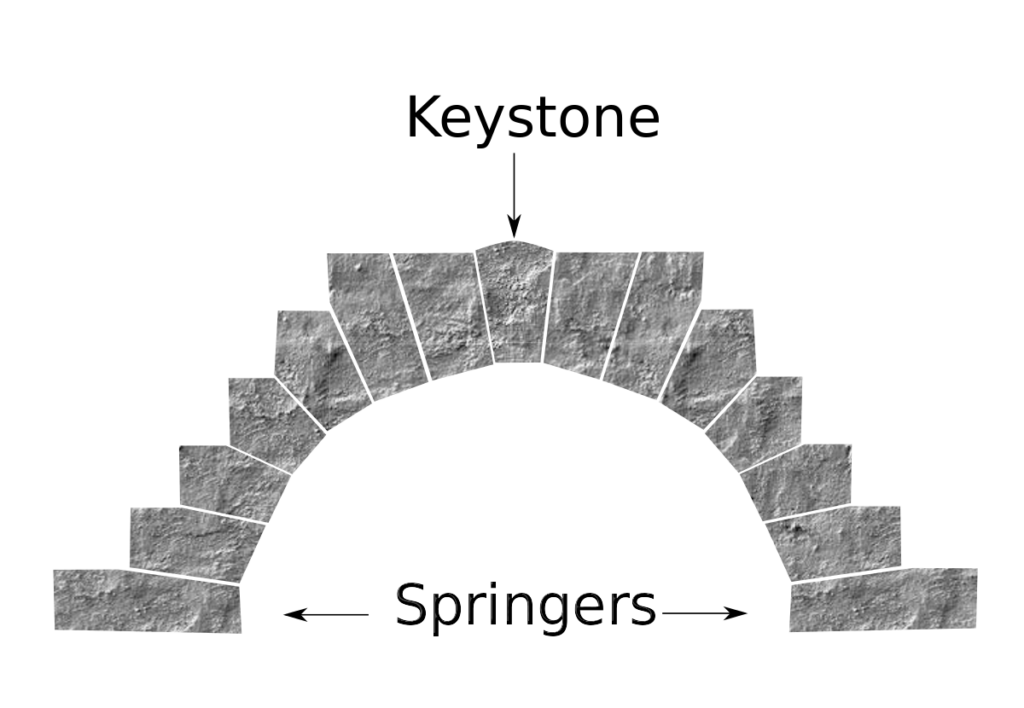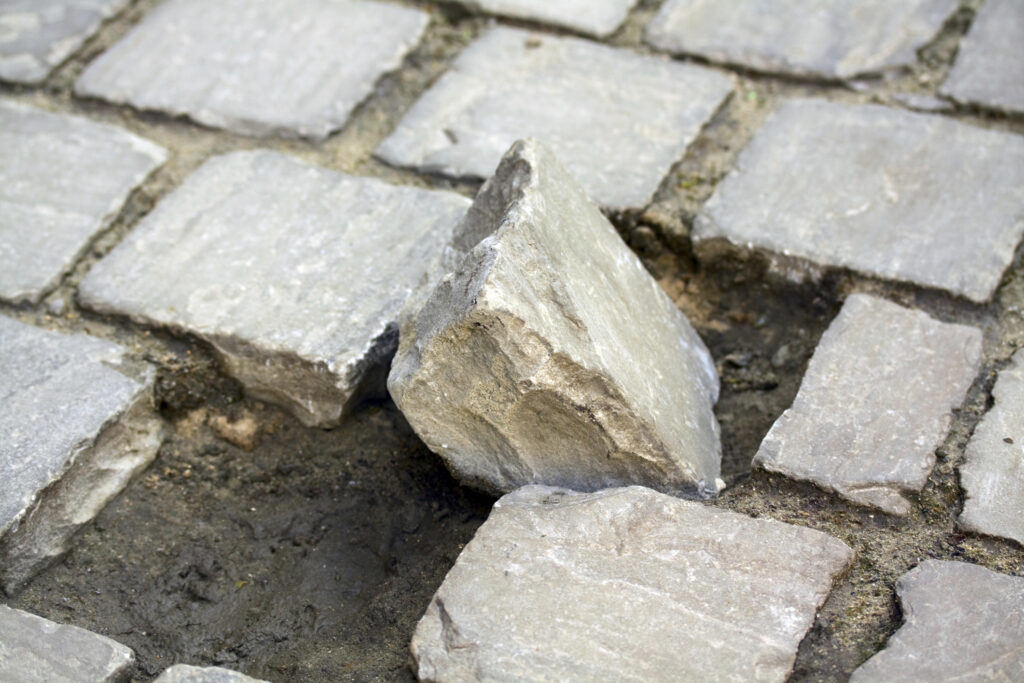Meditations on building houses (and lives) on sand vs stones: stumbling blocks, cornerstones, keystones, living stones
MATTHEW 7: 24-28 – Hearers and Doers – “Everyone then who hears these words of mine and acts on them will be like a wise man who built his house on rock. The rain fell, the floods came, and the winds blew and beat on that house, but it did not fall, because it had been founded on rock. And everyone who hears these words of mine and does not act on them will be like a foolish man who built his house on sand. The rain fell, and the floods came, and the winds blew and beat against that house, and it fell—and great was its fall!”
How … bring forth a garden on hard stone? Become earth, that you may grow flowers of many colors. For you have been heart-breaking rock. Once, for the sake of experiment, be earth! — Rumi
Poet to Bigot — Langston Hughes
I have done so little / For you,
And you have done so little / For me,
That we have good reason / Never to agree.
I, however, / Have such meagre / Power,
Clutching at a / Moment,
While you control / An hour.
But your hour is / A stone.
My moment is / A flower.
And they remembered that God was their rock, and the high God their redeemer. — Psalm 78:35
SONGS about Sand and Stones:
- My Feet Are on the Rock by I Am They (Christian country)
- Footprints in the Sand by Leona Lewis (Christian ballad)
- Heart of Stone featuring Natalie Paris from Six (musical)
- Wise Man Built His House Upon the Rock (Christian children’s song)
- Stone by Whiskey Myers (country-rock)
- Hearts of Stone by John Fogerty (country)
- Like a Rolling Stone by Bob Dylan (rock)
- Written in the Sand by Old Dominion (country)
- I’m Not Your Steppin’ Stone by The Monkees (rock)
- Every Grain of Sand by EmmyLou Harris (country)
- The Lord Is My Rock by Elevation Worship (Christian)
- Stone in Love by Journey (rock)
- Name in the Sand by Lil Skies (rock ballad – explicit language)
- I’ve Got Sand in my Shoes by The Drifters (rock)
- Turn to Stone by Electric Light Orchestra (rock)
- Circle in the Sand by Belinda Carlisle (pop)
- Pictures in the Sand by The Kinks (rock)
- Buleria by Camaron de la Isla (latin)
- Remember Walking in the Sand by The Beach Boys (rock)
- Remember Walking in the Sand by The Shangri-Las (rock)
- Blood from a Stone by Cinderella (rock)
- Castles in the Sand by Seals & Crofts (pop)
- Life Runs Out Like Sand by Bill Nelson (indie rock)
- Sand by The Shacks (pop)
- On the Dunes by Donald Fagen (rock)
- Stone Liberty by Diana Ross (rock)
- Sand by Thomas Rhett (country)
- Sea and Sand by The Who (rock)
To see a World in a Grain of Sand And a Heaven in a Wild Flower, Hold Infinity in the palm of your hand And Eternity in an hour. — William Blake
Very little grows on jagged rock. Be ground.
Be crumbled, so wildflowers will come up where you are.
― Rumi
The Stones – Wendell Berry
I owned a slope full of stones.
Like buried pianos they lay in the ground,
shards of old sea-ledges, stumbling blocks
where the earth caught and kept them
dark, an old music mute in them
that my head keeps now I have dug them out.
I broke them where they slugged in the dark
cells, and lifted them up in pieces.
As I piled them in the light
I began their music. I heard their old lime
rouse in breath of song that had not left me.
I gave pain and weariness to their bearing out.
What bond have I made with the earth,
having worn myself against it? It is a fatal singing
I have carried with me out of that day.
The stones have given me music
that figures for me their holes in the earth
and their long lying in them dark.
They have taught me the weariness that loves the ground,
and I must prepare a fitting silence.
Do Stones Feel? — Mary Oliver
Do stones feel? Do they love their life?
Or does their patience drown out everything else?
When I walk on the beach I gather a few
white ones, dark ones, the multiple colors.
Don’t worry, I say, I’ll bring you back, and I do.
Is the tree as it rises delighted with its many
branches, each one like a poem?
Are the clouds glad to unburden their bundles of rain?
Most of the world says no, no, it’s not possible.
I refuse to think to such a conclusion.
Too terrible it would be, to be wrong.
The Book of Camp Branch (excerpt) — Wendell Berry
How much delight I’ve known
in navigating down the flow
by stepping stones, by sounding
stones, by words that are
stepping and sounding stones.
Going down stone by stone,
the song of the water changes,
changing the way I walk
which changes my thought
as I go. Stone to stone
the stream flows. Stone to stone
the walker goes. The words
stand stone still until
the flow moves them, changing
the sound – a new word –
a new place to step or stand.
COMMENTARY on PARABLE of BUILDING a HOUSE on ROCK vs SAND
The picture is not of two men deliberately selecting foundations, but it contrasts one who carefully chooses and prepares his foundation with one who builds at hap-hazard. This is more strongly brought out by Luke (Luke 6:48): “Who digged and went deep, and laid a foundation upon the rock” … — Vincent’s Word Studies (full artilcle)
In the practical order, we find our Original Goodness, the image of God that we are, when we can discover and own the faith, hope, and love deeply planted within us:
- A trust in inner coherence itself. “It all means something!” (Faith)
- A trust that this coherence is positive and going somewhere good. (Hope)
- A trust that this coherence includes me and even defines me. (Love)
… Being created in the image of God (Genesis 1:26-27) gives everyone an equal and inherent dignity. However, in every age and culture, we have seen regressions toward racism, sexism, homophobia, militarism, ableism, and classism. This pattern tells me that unless we see dignity as being given universally, objectively, and from the beginning by God, we humans will constantly think it is up to us to decide… For the planet and for all living beings to move forward, we can rely on nothing less than an inherent original goodness and a universally shared dignity. Only then can we build, because the foundation is strong, and is itself good. Surely this is what Jesus meant when he told us to “dig and dig deep, and build your house on rock” (Luke 6:48). When we start with yes (or a positive vision), we are more likely to proceed with generosity and hope, and we have a much greater chance of ending with an even bigger yes, which we would call “resurrection.” — Fr Richard Rohr (full article)
… what Jesus himself taught and spent most of his time doing: healing people, doing acts of justice and inclusion, embodying compassionate and nonviolent ways of living… Jesus was teaching an alternative wisdom that shakes the social order instead of upholding the conventional wisdom that maintains it. Jesus’ Sermon on the Mount is not about preserving the status quo! It’s about living here on earth as if the Reign of God has already begun (see Luke 17:21). In this Reign, the Sermon tells us, the poor are blessed, the hungry are filled, the grieving are filled with joy, and enemies are loved. — Fr Richard Rohr (full article)
As in all hilly countries, the streams of Galilee rush down the torrent-beds during the winter and early spring, sweep all before them, overflow their banks, and leave beds of alluvial deposit on either side. When summer comes their waters fail (comp. Jeremiah 15:18; Job 6:15), and what had seemed a goodly river is then a tract covered with debris of stones and sand. A stranger coming to build might be attracted by the ready-prepared level surface of the sand. It would be easier to build there instead of working upon the hard and rugged rock. But the people of the land would know and mock the folly of such a builder, and he would pass (our Lord’s words may possibly refer to something that had actually occurred) into a by-word of reproach. On such a house the winter torrent had swept down in its fury, and the storms had raged, and then the fair fabric, on which time and money had been expended, had given way, and fallen into a heap of ruins. Interpreting the parable in the connection in which our Lord has placed it, it is clear that the house is the general fabric of an outwardly religious life. “The rock” can be nothing else than the firm foundation of repentance and obedience, the assent of the will and affections as well as of the lips. The “sand” answers to the shifting, uncertain feelings which are with some men (the “foolish” ones of the parable) the only ground on which they act—love of praise, respect for custom, and the like. The “wind,” the “rain,” the “floods” hardly admit, unless by an unreal minuteness, of individual interpretation, but represent collectively the violence of persecution, of suffering, of temptations from without, beneath which all but the life which rests on the true foundation necessarily gives way. Such is obviously the primary meaning of the parable here, but, like most other parables, it has other meanings, which, though secondary, are yet suggestive and instructive, and are not unsanctioned by the analogy of our Lord’s teaching. (1.) Already He had bestowed upon one of His disciples the name of Cephas, Peter, the Rock, and in so doing had at least indicated the type of character represented by the “rock” upon which the wise man built. When He afterwards said, “Upon this rock will I build my Church,” He was speaking in the character of a wise Master-builder who saw in fervent faith and unhesitating obedience the ground-work on which the Christian society, which He designated as His kingdom, was to rest. — Ellicott’s Commentary (full artilcle)
Palestine was to a considerable extent a land of hills and mountains. Like other countries of that description, it was subject to sudden and violent rains. The Jordan, the principal stream, was annually swollen to a great extent, and became rapid and furious in its course. The streams which ran among the hills, whose channels might have been dry during some months of the year, became suddenly swollen with the rain, and would pour down impetuously into the plains below. Everything in the way of these torrents would be swept off. Even houses, erected within the reach of these sudden inundations, and especially if founded on sand or on any unsolid basis, would not stand before them. The rising, bursting stream would shake it to its foundation; the rapid torrent would gradually wash away its base; it would totter and fall. Rocks in that country were common, and it was easy to secure for their houses a solid foundation. No comparison could, to a Jew, have been more striking. So tempests, and storms of affliction and persecution, beat around the soul. Suddenly, when we think we are in safety, the heavens may be overcast, the storm may lower, and calamity may beat upon us. In a moment, health, friends, comforts may be gone. How desirable, then, to be possessed of something that the tempest cannot reach! Such is an interest in Christ, reliance on his promises, confidence in his protection, and a hope of heaven through his blood. Earthly calamities do not reach these; and, possessed of religion, all the storms and tempests of life may beat harmlessly around us. — Matthew Henry’s commentary (full artilcle)
The teacher explained how each thing in the lesson had a much deeper meaning …— Gwen Schnell
- The house is much more than just a house! It is like our life and what we do with it.
- The storm-wind, rain, and floods are like troubles or problems that come into our lives, maybe like temptations.
- The strong rock is like Jesus. He helps us when we are having troubles, like the storm. Jesus helps stay strong and do the right thing and trust in Him.
- The soft sand is like worldly things. It’s whatever you may trust in INSTEAD of Jesus. It’s not strong or reliable. You will not find the help you need to be strong and do the right thing if you trust in anything or anyone but Jesus.
- The wise man was someone who listened to Jesus and obeyed Him, the foolish man was someone who did not.
LIVING STONES: Definition, Context, Commentary

The term living stones … is used as a metaphor to illustrate the secure and intimate relationship … with Jesus … — Gotquestions.org (full article)
The lively stone is us — all who belong to Jesus — and the Living Stone is Jesus. — Shari Abbott
Wherever, in any world, a soul, by free-willed obedience, catches the fire of God’s likeness, it is set into the growing walls, a living stone. — Phillips Brooks
As we come together, each of us a living stone, we are built into something greater through the power of Jesus Christ. We are special and important and Christ is alive in us and waiting for us to actually be a living stone. To take risks and live and breath everything through the power of Jesus Christ. — Ministry Matters (full article)
The “rock-stone” image imagery is common in Scripture. As Hillyer says, “There is, for example, the stumbling stone of Isaiah 8:14, the foundation stone of Isaiah 28:16, the parental rock of Isaiah 51:1f., the rejected but vindicated building stone of Psalm 118:22, the supernatural stone of Daniel 2:34 and the burdensome stone of Zechariah 12:3” (Norman Hillyer, “Rock-Stone Imagery in 1 Peter”, The Tyndale Bulletin, 22 [1971] 58). There is fair evidence that “Rock/Stone” was a messianic title among the Jews as well as among the Christians… — Edwin Blum
Four Stones — Mary Oliver
On the beach, at dawn:
Four small stones clearly
Hugging each other.
How many kinds of love
Might there be in the world,
And how many formations might they make
And who am I ever
To imagine I could know
Such a marvelous business?
When the sun broke
It poured willingly its light
Over the stones
That did not move, not at all,
Just as, to its always generous term,
It shed its light on me,
My own body that loves,
Equally, to hug another body.
SAND: Definition, Context, Commentary

… a loose granular material that results from the disintegration of rocks, consists of particles smaller than gravel but coarser than silt, and is used in mortar, glass, abrasives, and foundry molds. — Merriam-Webster definition
Sand is a granular material composed of finely divided rock and mineral particles. Sand has various compositions but is defined by its grain size. Sand grains are smaller than gravel and coarser than silt… Sand is a non-renewable resource over human timescales …— Wikipedia
We see God separating that which is holy apart, and setting it aside for himself in many places in Scripture. But conversely, the Hebrew word for sand, חול (chol), is the same as the word for “secular” or “ordinary” – that which is not set aside or holy… The dense dusty sand that hung over Israel was a good reminder of how sin and worldliness works:
- It clouds our vision and brings short-sightedness
- It chokes and suffocates life
- It makes it difficult to move up and out
— One for Israel (full article)
… sand and gravel resources are the second-largest resource extracted and traded by volume after water. — United Nations (full article)
CORNERSTONE: Definition, Context, Commentary

The cornerstone of something is the basic part of it on which its existence, success, or truth depends. — Collins Dictionary
In relation to architecture, a cornerstone is traditionally the first stone laid for a structure, with all other stones laid in reference. A cornerstone marks the geographical location by orienting a building in a specific direction. … Over the years, cornerstones have served a variety of purposes. As a means to preserve time, buildings have been marked with a numerical representation to remind people when the building was erected. This has given correlation to architecture and the design of the time. Additionally, cornerstones have become a strong symbol of a new era. They have indicated prosperity and opportunity—showing a sense of pride for what is possible at the time of construction. Cornerstones have also been turned into pieces of memorabilia, marking present buildings or denoting previously standing buildings. …
As the commemorative qualities of cornerstones have become recognized, the locations of craftsmanship have expanded to stones near or above the front door of a building. — New Studio Architecture (full article)
Since ancient times, builders have used cornerstones in their construction projects. A cornerstone was the principal stone, usually placed at the corner of an edifice, to guide the workers in their course. The cornerstone was usually one of the largest, the most solid, and the most carefully constructed of any in the edifice. The Bible describes Jesus as the cornerstone that His church would be built upon. He is foundational. Once the cornerstone was set, it became the basis for determining every measurement in the remaining construction; everything was aligned to it. As the cornerstone of the building of the church, Jesus is our standard of measure and alignment. — Gotquestions.org (full article)
A cornerstone (Greek: Άκρογωνιεîς, Latin: Primarii Lapidis) will sometimes be referred to as a “foundation-stone”, and is symbolic of Christ, whom the Apostle Paul referred to as the “head of the corner” and is the “Chief Cornerstone of the Church” (Ephesians 2:20) — Wikipedia
CAPSTONE or KEYSTONE: Definition, Context, Commentary

… it was the Roman civilization (1000 B.C.E. – 500 C.E.) that first began using a keystone (also called a capstone) in their arches. The keystone is the topmost stone in the arch. The one in the illustration on the right is exaggerated in size from what a normal keystone would be. The keystone helped to distribute the weight down the side supporting blocks (voussoir blocks) of the columns. With this design, the keystone is the “key” to supporting the arch, because if you remove the stone, the arch would collapse. — Ask a Biologist (full article)
Jesus is the keystone of creation; bringing order from non-order and providing a resolution for the problem of disorder introduced by sin. — RJS summarizing Jonathan Walton’s argument, Patheos.com (full article)
God next speaks of the “capstone” or “headstone.” Some people have assumed that this was a foundation stone, but it is not. God is speaking about finishing the temple, not starting it. This is not the cornerstone, which is installed in the foundation, but the finishing stone—the very last one set. It can also be called the gable stone or even the keystone that would finish an archway. It is a symbol of completion. In this case, it represents the Temple being sufficiently ready for God’s habitation. This ought to be clear. He is alluding to the preparation of the church for God’s Kingdom... their job of measuring the Temple, the altar, and the worshippers will be successful. They will be successful by”grace, grace”—double grace. Their work will be accomplished only by an extra measure of God’s grace.— Richard Ritenbaugh
Do not look only for the beautiful, water-polished stones that represent Christ’s abundant gifts and graces that He’s given you in the happy, simple, and easy times. Look also for the rough-edged rocks, and even the huge boulders, that represent Christ’s presence, provision, and protection in the most difficult, trying, and troubling times of life. — Shari Abbott
STUMBLING BLOCK: Definition, Context, Commentary

1 : an obstacle to progress 2 : an impediment to belief or understanding — Dictionary
During our step-work, every time we got to the fourth step—Made a searching and fearless moral inventory of ourselves—the women gave me a lot of pushback… They felt that … “what they’d done wrong” was the focus of many of their classes. It felt exhausting to them… It was not a punitive action… What if we can identify the thing that keeps us from enjoying life to its fullest? Can we look at this exercise as a diagnostic tool? … Mark Thibodeaux, SJ, writes, “If we take an honest look at the mistakes we’ve made, we’ll see that many of them were a reaction to an unnamed fear within us.” Twelve-steppers agree with that statement. We are told that our character defects (sin) are our instincts run amok… Once those fears have been identified, we have something on which to work. The goal of this work is reconnection…. — Jean Heaton, Noticing My Stumbling Blocks (full article)
Let us therefore no longer pass judgment on one another, but resolve instead never to put a stumbling block or hindrance in the way of another… Let us then pursue what makes for peace and for mutual upbuilding. — Paul’s Letter to Romans
